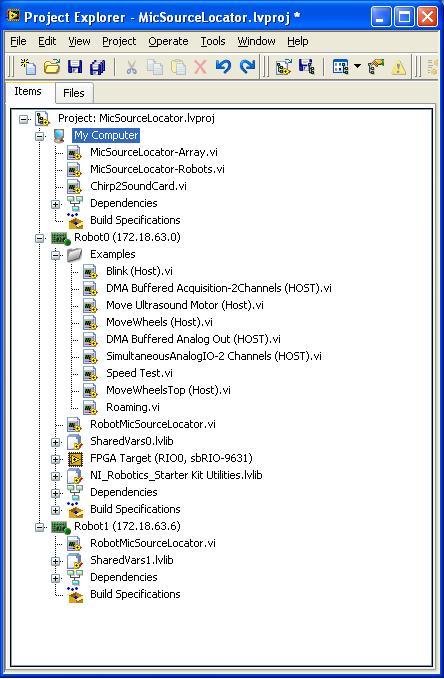Difference between revisions of "Project2: Triangulation with sbRIO robots"
From ESE497 Wiki
Jump to navigationJump to search| Line 1: | Line 1: | ||
| − | * Background | + | * '''Background''' |
| − | ** | + | ** '''View''' the [[LabVIEW_for_Robotics|LabVIEW for Robotics]] page for reference information about the sbRIO robots. |
| − | + | [[File:MicSourceLocatorProject.JPG|MicSourceLocator Project]] | |
| − | ** | + | ** '''Open''' DMA Buffered Acquisition-2Channels (HOST).vi and use Save As, save to a new name and start editing this. |
* Compute angle of arrival on Robot platform using your ComputeAngle subVI | * Compute angle of arrival on Robot platform using your ComputeAngle subVI | ||
* Source Location using N Robots | * Source Location using N Robots | ||
Revision as of 16:03, 17 June 2010
- Background
- View the LabVIEW for Robotics page for reference information about the sbRIO robots.
- Open DMA Buffered Acquisition-2Channels (HOST).vi and use Save As, save to a new name and start editing this.
- Compute angle of arrival on Robot platform using your ComputeAngle subVI
- Source Location using N Robots
- PC to Robot communication using Shared Variable
- NI Example Finder -> Toolkits and Modules -> Real-Time -> Network Communication -> RT Network Communication.lvproj
- RT Code to move robot to a new position (x,y,theta)
- LabVIEW code to command robot to new Manual Position using Shared Variable
- Add a 2nd Robot to Project
- Compute source location from 2 robots
- Expand to N robots
- Automated controller algorithm to optimize robot positions
- PC to Robot communication using Shared Variable
Extra Credit
- Thin client communication to Robot
